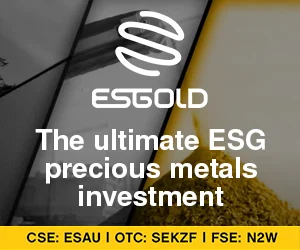Gold has emerged as a beacon of stability in an increasingly chaotic global landscape, with prices soaring nearly 30% this year. This surge is driven by a confluence of factors, including geopolitical tensions, central bank buying, and heightened investor demand. For those contemplating an investment in gold, the question arises: Is it too late to get in?
Gold Price Latest
As of now, gold prices have reached remarkable heights, briefly spiking above $3,500 an ounce in April before stabilizing. Goldman Sachs projects that gold could climb to $3,700 by the end of 2025, up from $3,220 in mid-May. This bullish outlook is underpinned by sustained inflows into gold and a persistently weak real yield environment. For investors who have yet to incorporate gold into their portfolios, there remains an opportunity to evaluate its role as both a defensive asset and a potential growth driver.
Why Gold Is Gaining
Several tailwinds are propelling gold’s ascent in 2024:
Central Bank Purchases: Central banks globally have accumulated over 1,000 tonnes of gold this year, marking one of the highest official sector accumulation periods in recent history. This trend reflects a strategic shift towards diversifying reserves away from the U.S. dollar.
Investment Demand: Gold ETFs have reported a staggering 170% year-over-year increase in inflows during the first quarter, indicating a robust appetite among institutional investors.
Macroeconomic Uncertainty: Ongoing geopolitical conflicts and softening trade dynamics have reinforced gold’s appeal as a safe haven and a store of value.
Low Real Interest Rates: With real interest rates remaining low by historical standards, non-yielding assets like gold become increasingly attractive compared to traditional bonds.
Goldman Sachs has further projected that if recession risks escalate in the United States, gold could potentially reach $4,800 by mid-2026. While forecasts are inherently uncertain, institutional sentiment suggests growing confidence in gold’s upside potential.
What Retail Investors Should Consider
For retail investors looking to diversify their portfolios or reduce volatility, gold presents a compelling option. A typical allocation to gold ranges from 5% to 10% within a balanced portfolio.
Exchange-traded funds (ETFs) like GLD and IAU offer cost-effective exposure with daily liquidity, making them practical choices for most investors. For those with a tactical approach, price pullbacks toward the $3,300 to $3,200 range may provide more attractive entry points.
In the near term, Federal Reserve policy decisions and geopolitical developments will be key catalysts for gold prices. Unlike previous cycles, gold’s current price dynamics are increasingly influenced by investment demand—particularly through ETFs—rather than traditional uses like jewelry or industrial applications. This shift underscores the importance of monitoring investor sentiment and fund flows in setting market trends.
Central Bank and Institutional Support
Central banks have been steadily increasing their gold reserves as a strategic diversification measure. Official sector holdings reached nearly 36,000 tonnes in 2024, nearing a six-decade high. This trend reflects a broader move away from dollar dependence and toward tangible, reserve-backed stability.
Additionally, ETF flows remain robust. The World Gold Council reported that Q1 2025 marked the strongest start for total demand since 2016, occurring alongside only a modest rise in global supply. This tight supply-demand dynamic further supports gold’s price resilience.
Risks and Key Watchpoints
While the case for gold remains strong, several factors could impact its near-term trajectory:
Interest Rate Dynamics: If anticipated interest rate cuts do not materialize, gold could lose momentum.
ETF Redemptions: Profit-taking or redemptions from ETFs could create temporary price weakness.
Geopolitical Stability: A calming of geopolitical tensions or macroeconomic conditions may reduce safe-haven demand.
These risks highlight the importance of managing exposure size, monitoring market signals, and aligning gold allocations with broader investment goals.
Quick Reference for Gold Exposure
Is gold still considered an inflation hedge?
Gold tends to perform well when real interest rates are low or when inflation exceeds expectations, particularly if central banks are slow to respond.
Why are central banks increasing gold reserves?
To diversify away from dollar-based assets and reduce vulnerability to sanctions or geopolitical instability.
What is the current primary driver of gold prices?
Geopolitical tension and real interest rate dynamics are influencing demand, but official sector buying and ETF flows are increasingly shaping prices.
Positioning for Resilience with Gold
With rising demand from central banks and investors alike, limited new supply, and a backdrop of macroeconomic uncertainty, gold may be well-positioned to serve as both a risk management tool and a performance contributor within a balanced portfolio. Retail investors seeking stability, liquidity, and non-correlated exposure should consider reviewing gold’s potential role now, rather than later.
Could This Be the Next Chapter in Canada’s Gold Revival?
As gold prices reach record highs in 2025, a new gold project is taking shape in central Newfoundland, adjacent to the Valentine Mine, which is set to become Canada’s largest gold mine once construction is complete. With permits secured and drilling underway, this early-stage explorer is targeting structures in the same mineral-rich corridor. While it’s still early days, the location offers geological context, infrastructure advantages, and promising drill results that are drawing interest.
As gold continues to attract investor attention, many are keenly observing how nearby exploration stories unfold. Curious about this developing opportunity? Explore the story here.
In conclusion, while gold has already experienced significant gains this year, the evolving landscape of global economics and investor sentiment suggests that there may still be opportunities for those looking to invest in this timeless asset.




